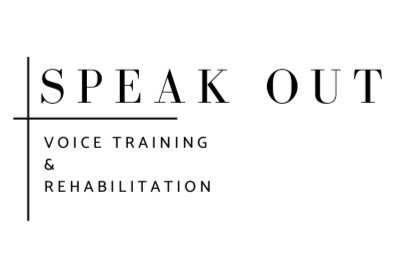
Voice Rehabilitation
Ruth is particularly qualified and accomplished at assisting individuals to regain and strengthen their voice thanks to more than two decades of performing and teaching classical singing. Not only does she know the science of vocal production, but she has years of experience listening to how people sound and is adept at pinpointing the areas of tension that impede healthy voice production. Ruth refers to and receives referrals from the UCSF Voice and Swallowing Center and Kaiser Permanente.
-
Ruth is particularly qualified and accomplished at assisting individuals to regain and strengthen their voice thanks to more than two decades of performing and teaching classical singing. Not only does she know the science of vocal production, but she has years of experience listening to how people sound and is adept at pinpointing the areas of tension that impede healthy voice production. Ruth refers to and receives referrals from the UCSF Voice and Swallowing Center and Kaiser Permanente.
Ruth provides a number of different exercises to relieve tension and encourage healthy voice production. These range from relaxation and breath management exercises to a variety of phonation tasks. The latter begin with whichever sounds the person is able to produce without strain. These gradually increase in complexity as the new vocal habits become embedded. Most of Ruth's clients require approximatelysix sessions, but there are exceptions at both ends of the spectrum. Critical to success is both the motivation to change one's speech habits and the daily practice of voice assignments. Certain activities - such as smoking and yelling - should be dispensed with before beginning rehabilitation. If you have not already been seen by a Laryngologist, Ruth will be happy to recommend one.
-
Most people take their voice for granted, unless it becomes hoarse, tires easily, or in some other way ceases to function as before. Usually such dysphonia is of short duration but, in some cases, it may become chronic. If it lasts for more than two weeks and is unrelated to an upper respiratory tract infection it is advisable to visit a Laryngologist or throat specialist. The Laryngologist, using videostroboscopy, will usually be able to diagnose the kind of voice disorder and to determine whether any pathology is present, such as growths on the vocal folds. Growths include nodules, granuloma, cysts, and polyps.
The first two tend to respond better to voice retraining than the latter two. Nevertheless, Ruth has had success in reducing the size of these as well.
Treatment of dysphonia will vary, depending on the diagnosis. Some voice disorders tend to be unresponsive to the kind of behavioral retraining inherent in voice rehabilitation, while others are very responsive. In the latter case, much of the success will depend on the motivation of the patient to alter his or her speech or singing habits. If pathology is present whose cause lies in habitual vocal habits, there is no point in undergoing surgery before first learning how to alter this behavior. Otherwise, the pathology will most likely return.
-
Some useful terms:
Dysphonia: An abnormal voice quality, such as hoarseness
Videostroboscopy: The use of a camera - either by means of a rigid oral scope or a flexible nasal scope - to obtain video images of the laryngeal structure and of the vocal folds in motion. This is a simple, outpatient procedure, involving little or no discomfort, and is far superior to the traditional ENT exam using a mirror.
MTD (Muscle Tension Dysphonia): Muscle tension either in the throat and neck area or involving the breathing mechanism that prevents easy phonation. A significant portion of Ruth's voice rehabilitation practice involves MTD, which generally responds well to behavioral retraining.
SD (Spasmodic Dysphonia): A neurological voice disorder that involves involuntary "spasms" of the vocal cords causing interruptions of speech and affecting the voice quality. There is a certain amount of controversy regarding the treatment of SD.
The following links reflect a few of these viewpoints:
Testimonials
